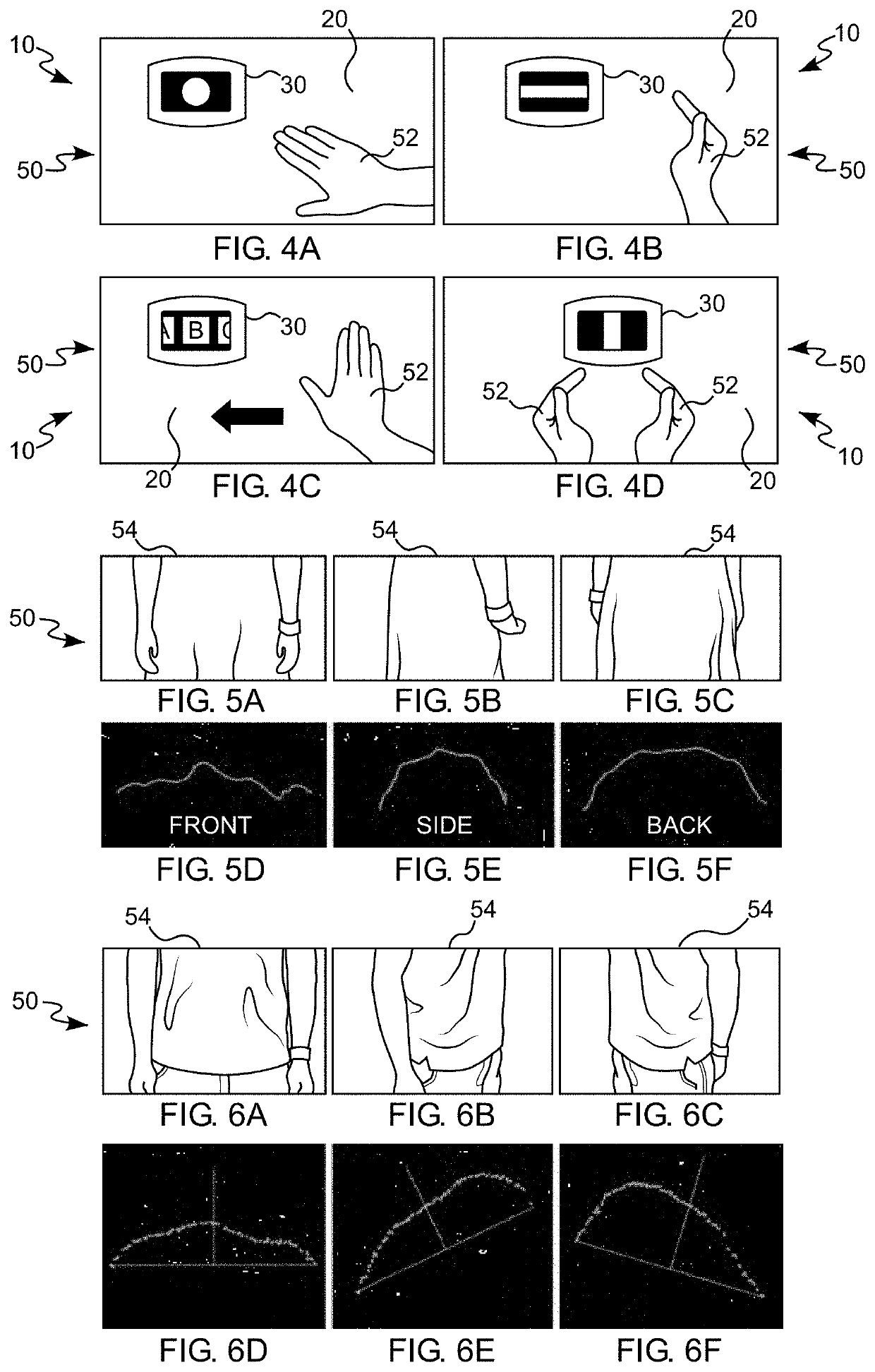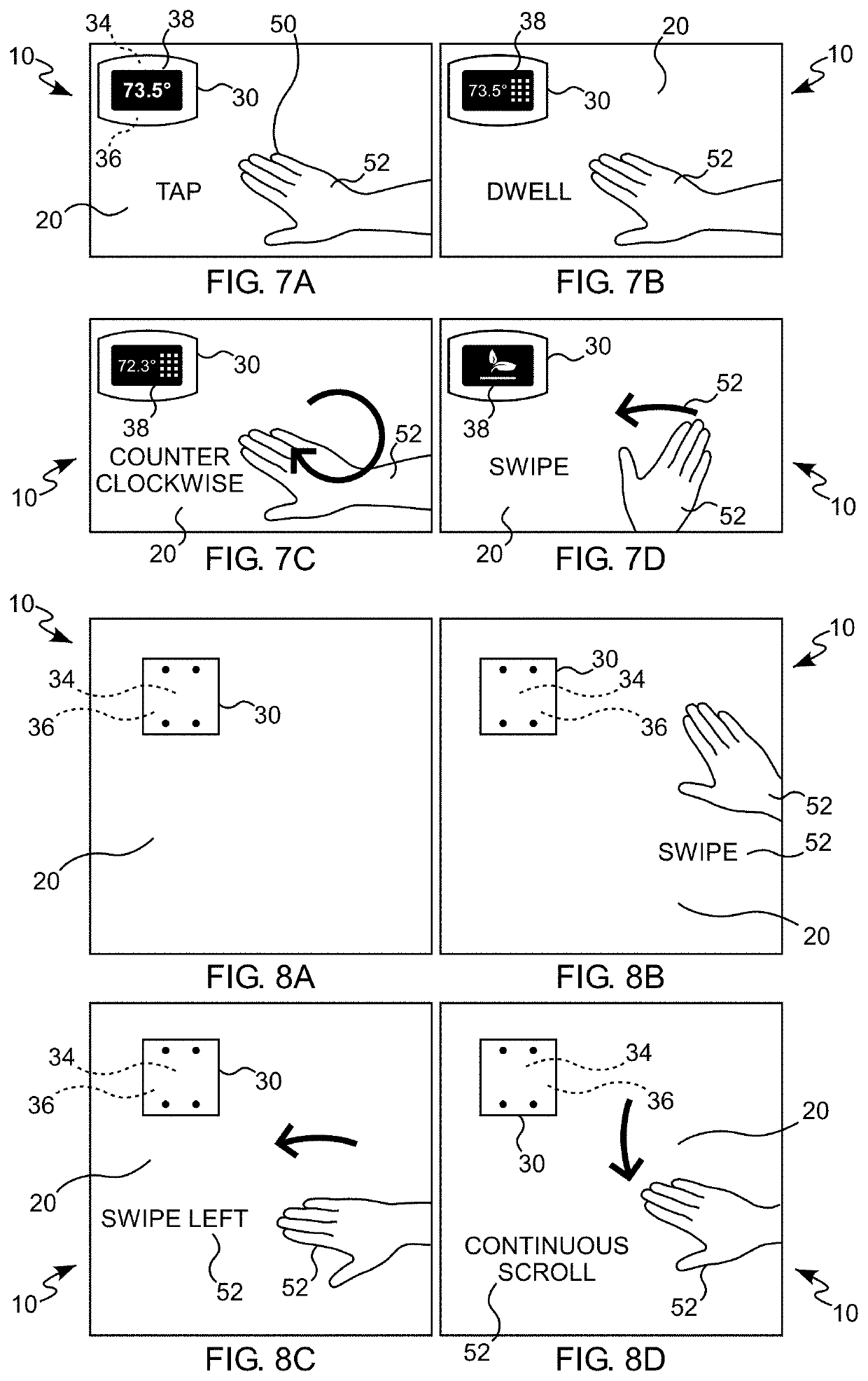System, method and devices for touch, user and object sensing for IoT experiences
a technology of object sensing and touch, applied in the field of system, method and device for touch, user and object sensing for iot experiences, can solve the problems of limited awareness, extremely limited or no on-device input products, and general recognition of cumbersome user experien
- Summary
- Abstract
- Description
- Claims
- Application Information
AI Technical Summary
Benefits of technology
Problems solved by technology
Method used
Image
Examples
third embodiment
[0087]the present invention is an augmented smart device 30 (for example Amazon Alexa™) (shown in FIG. 9). It will be obvious to one skilled in the art that this augmentation can be applied to any similar computing device 30 and is not limited to the Alexa™. The Alexa™ can be programmatically control through its Alexa Skills Kit API. As shown in FIGS. 9A through 9F, one embodiment of the present invention is situated on a kitchen countertop and employs a recipe app demo that can recognize common kitchenware, including mixing bowls, mortar, chopping board, and measuring cups of various sizes. If the recipe app requests an object as part of a recipe step (FIG. 9A) (e.g., “retrieve the mixing bowl”), it automatically advances to the next instruction once that item is placed on the host surface area 20 (FIG. 9B). The reference numbers shown in FIG. 9A are applicable to FIGS. 9B through 9F, where similar components are illustrated in those figures, but for clarity not every reference num...
fourth embodiment
[0089]the present invention, shown in FIGS. 10A through 10D, is a music player using an instrumented Google Home (or any similar IoT device). This scans for phones resting nearby on the same host surface area 20 (FIG. 10A), which is interpreted to be an explicit action by a user to connect the two devices. This is in contrast to e.g., automatic Bluetooth pairing, which might occur when the device is in the pocket of a nearby user. Once connected, music can be controlled by using the table's host surface area 20: tap to pause / play (FIG. 10B), left and right swipes to move between songs (FIG. 10C), left and right continuous motions to scrub inside of a song and sliding up and down to control volume. As noted earlier, smart speakers have trouble with spoken input when playing content. In one embodiment of the present invention, the music volume is momentarily halved when a user turns to face the Google Home, in anticipation of a spoken command. Finally, the present invention can also t...
PUM
 Login to View More
Login to View More Abstract
Description
Claims
Application Information
 Login to View More
Login to View More - R&D
- Intellectual Property
- Life Sciences
- Materials
- Tech Scout
- Unparalleled Data Quality
- Higher Quality Content
- 60% Fewer Hallucinations
Browse by: Latest US Patents, China's latest patents, Technical Efficacy Thesaurus, Application Domain, Technology Topic, Popular Technical Reports.
© 2025 PatSnap. All rights reserved.Legal|Privacy policy|Modern Slavery Act Transparency Statement|Sitemap|About US| Contact US: help@patsnap.com



